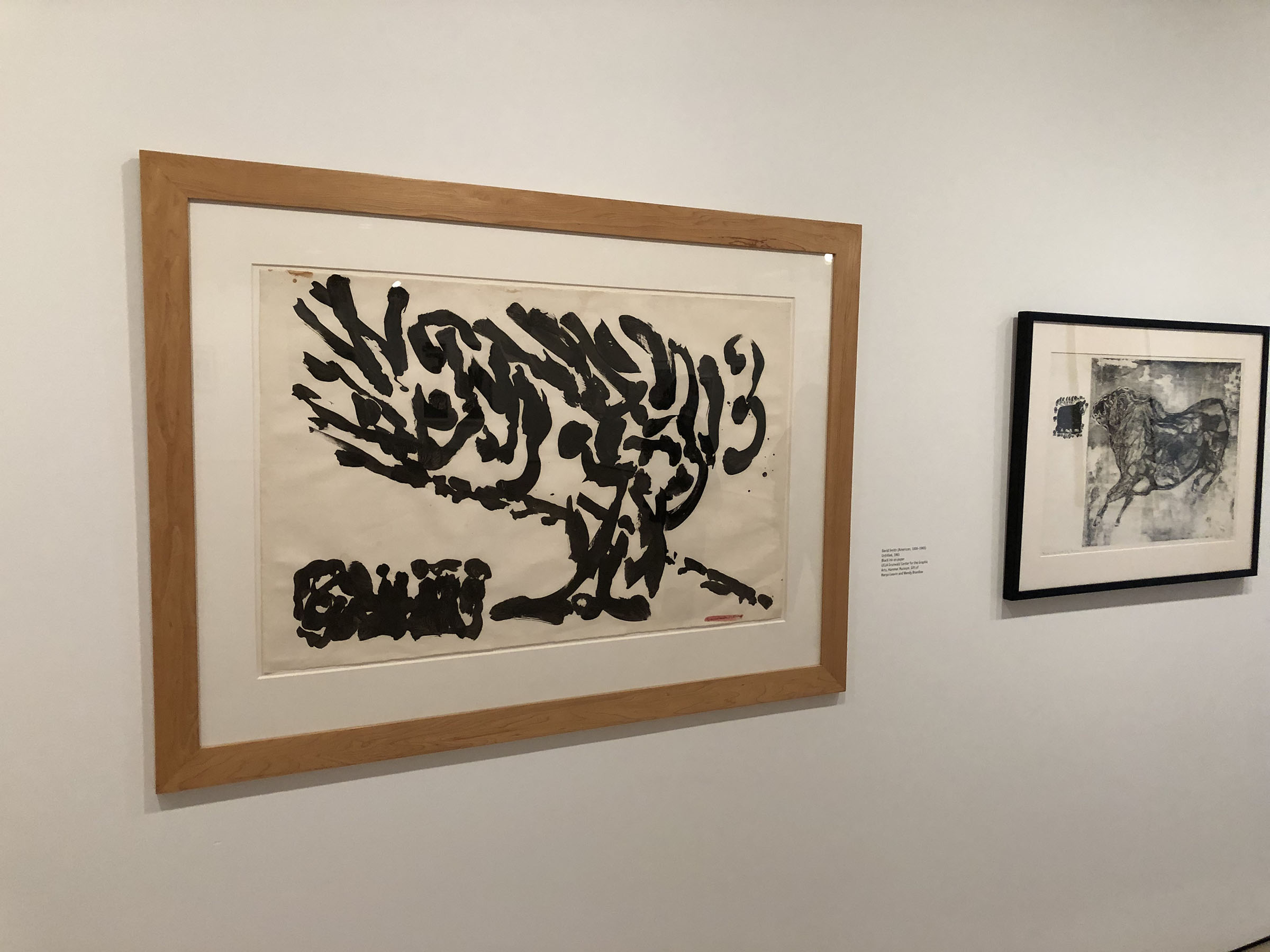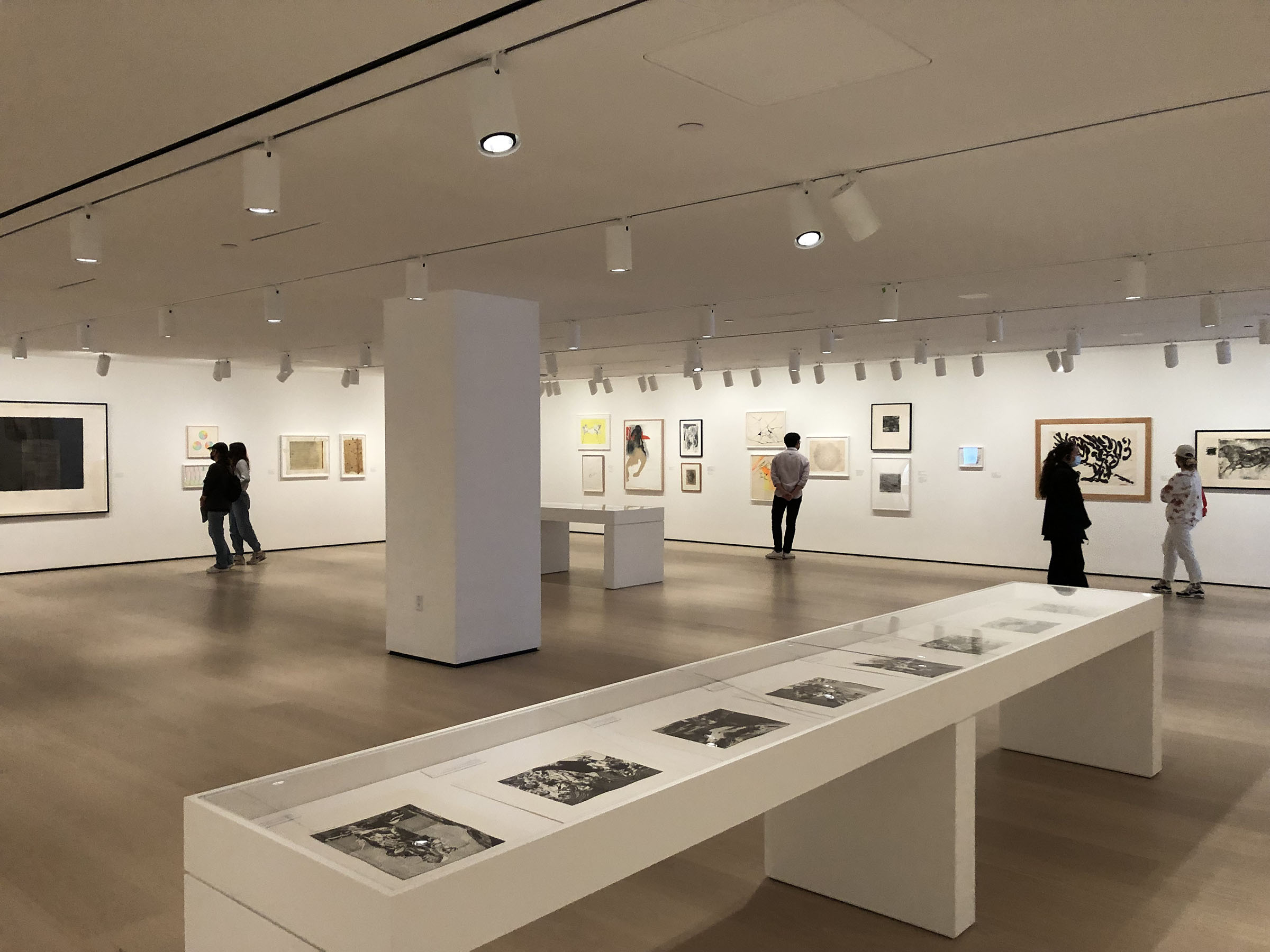The UCLA Hammer Museum has opened its first dedicated Works on Paper Gallery. Designed by Michael Maltzan, the 3100-sf room is large, square, and necessarily windowless. It adjoins a more dramatic space that becomes the new UCLA Grunwald Center for the Graphic Arts.
The gallery's inaugural exhibition is "A Decade of Acquisitions of Works on Paper" (through May 1, 2022). Curated by Cynthia Burlingham, director of the Grunwald Center, and Connie Butler, chief curator of Hammer, it draws on UCLA's two prints and drawing collections. The Grunwald Center is a traditional university survey of graphic art, Renaissance to now, while the Hammer Contemporary Collection was established only in 2005 to collect contemporary drawings and prints. The Hammer Contemporary Collection now encompasses all media, and the Grunwald collects contemporary works on paper as well. The works in "A Decade of Acquisitions" span the early 1960s (a Zen-inspired ink drawing by David Smith) to the pandemic years.
 |
| Lee Bontecou, untitled, 1982-1987. UCLA Grunwald Center for the Graphic Arts, Hammer Museum |
This mesmerizing Bontecou drawing transcends its size and humble support (graph paper). Displayed near the exhibition's entrance, it exemplifies the extraordinarily high quality and interest of the collected works.
 |
| Rashid Johnson, Untitled Anxious Red Drawing, 2020 |
 |
| David Smith, untitled, 1961, and Betye Saar, Black Angus Meets Big Brahma, 1964 (both Grunwald Center) |
 |
| Sam Gilliam, untitled, 1968 |
 |
| Glenn Ligon, untitled, 2016. Grunwald Center |
The reproduced page is from James Baldwin's 1953 essay, "Stranger in the Village."
 |
| Judy Chicago, Study for Whirling Donuts, 1968, and Study for Fresno Fan, 1970 |
Study for Whirling Donuts is a gift from the artist.
 |
| John Currin, Untitled (For Mary), 1989 |
 |
| At left, two untitled drawings by Miguel-Ángel Cárdena, about 1972. Center and right, a drawing by Ruth Asawa and prints by Richard Artschwager (Grunwald Center) and Vija Celmins (Grunwald Center) |
Miguel-Ángel Cárdenas (1934-2015) was a Colombian artist who spent most of his career in the Netherlands. He was associated with Pop before turning to video and digital art. The two drawings here are abstract and crypto-erotic.
 |
| Larry Bell, LVFBK-8, 1979 |
LVFBK-8 is executed in aluminum and silicon monoxide on black paper. Bell used the same high-tech compounds in tinting his glass cube sculptures.
(Except as specified, works are from the Hammer Contemporary Collection.)










Comments
Get help before you are replaced.
Hey, that freeway overpass is going to need a lot of draperies. It's also going to need a way to stem some of the red ink too.
Maybe they can go into the business of selling window coverings? Don't know if that generates a lot of big bucks, however.